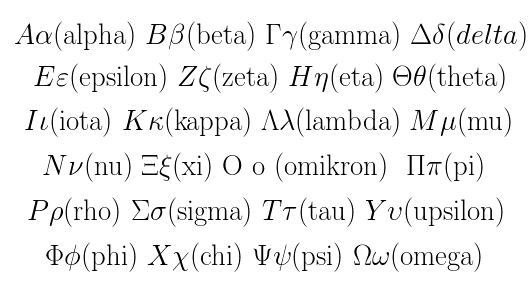This article gives a quick sneak peek into the history of writing - from ancient cave paintings to markup languages like AsciiDoc.
Dawn of Expression (40,000 BC)

Before the written word, early humans communicated through symbols and cave paintings. These beginnings were crucial for recording events and transmitting knowledge long before structured language systems. Cave paintings, such as those found in Lascaux, France, and Altamira, Spain, date back as far as 40,000 years. These early artworks typically depicted scenes of hunting, daily life, and significant events. The images included animals, human figures, and abstract symbols, serving as a visual record of the prehistoric world.
In addition to their artistic value, cave paintings were a means of communication and documentation. They allowed early humans to convey information, share stories, and perhaps even perform rituals or express spiritual beliefs. These paintings were often located deep within caves, suggesting that they held special significance, possibly related to rituals or storytelling. This form of communication laid the foundation for more complex systems of writing, marking a significant leap in human cognitive and cultural development.
Cuneiform & Hieroglyphs (3200 BC - 3000 BC)

The Sumerians in Mesopotamia created the first known writing system, cuneiform, which evolved from pictographs to wedge-shaped inscriptions on clay tablets. Initially used for record-keeping, cuneiform inscriptions documented everything from agricultural transactions to astronomical observations. The development of cuneiform allowed for the administration and organization of one of the world's first great civilizations. Over time, the script became more abstract and complex, enabling the recording of laws, literature, and treaties.
Around the same time, ancient Egyptians developed hieroglyphs, a complex system of writing that combined logographic and alphabetic elements. Hieroglyphs adorned temple walls, tombs, and papyrus scrolls, serving both communicative and decorative purposes. The Rosetta Stone, discovered in 1799, was key to deciphering this script, revealing a rich literary and historical tradition. The ability to write facilitated the administration of the state and the documentation of cultural and religious practices.
Chinese Oracle Bones Scripts (1200 BC)

Parallel to the alphabetic systems of the West, China developed a logographic script, a writing system that uses symbols to represent words or morphemes. This script, first seen in oracle bone inscriptions, has endured for millennia and remains in use today. The Chinese writing system is notable for its complexity and longevity. Each character represents a word or a meaningful part of a word, making the script uniquely suited to the Chinese language and its many dialects.
The endurance of Chinese characters highlights their adaptability and cultural significance. Over thousands of years, the script has evolved but has retained its core logographic nature. This continuity has enabled the preservation of ancient texts and facilitated the transmission of cultural and historical knowledge across generations. The complexity and beauty of Chinese characters also reflect the importance placed on calligraphy and the visual aspect of writing in Chinese culture.
Phonetic Revolution (1050 BC)

The Phoenician alphabet was a game-changer in the history of writing. It represented sounds rather than concepts, creating a more efficient and versatile writing system. This alphabet consisted of 22 characters, all consonants, making it simpler and more accessible than previous systems. It was also the first alphabet with a fixed writing direction. The Phoenician alphabet's simplicity and practicality allowed it to be easily adopted and adapted by other cultures, greatly influencing the development of subsequent writing systems.
The use of this alphabet significantly increased literacy rates among the Phoenicians and facilitated more precise communication. It enabled the recording and dissemination of knowledge, contributing to the spread of Phoenician culture and commerce throughout the Mediterranean region. The transition from complex pictographs to a streamlined phonetic system marked a significant advancement in writing technology, setting the stage for future developments in written communication.
Alphabets & Standards (1050 BC - 529 AD)

The development of alphabetic writing systems marked a significant milestone in the history of writing. As stated above, the Phoenicians created one of the first alphabets, representing sounds rather than concepts. This innovation laid the groundwork for future alphabets. By circa 800 BC, the Greeks adopted the Phoenician alphabet and added vowels, creating a true alphabet that greatly enhanced literacy and communication.
The Romans further adapted the Greek alphabet to develop the Latin alphabet, which became the foundation for many modern Western languages. The spread of the Roman Empire facilitated the dissemination of the Latin writing system across Europe. The codification of Roman laws, beginning with the Twelve Tables around 450 BC and culminating in Emperor Justinian I's Corpus Juris Civilis in 529 AD, played a crucial role in standardizing texts and preserving legal and administrative records.
Monasteries & Inventions (500 AD - 1200 AD)

During the early medieval period, monasteries became centers of learning and writing. Monks in scriptoriums meticulously copied religious and classical texts, preserving knowledge through beautifully illuminated manuscripts. These manuscripts were vital in maintaining literacy and learning during the Dark Ages. The development of the Gothic script, with its dense and angular style, further contributed to the proliferation of written material in Europe.
The introduction of paper to Europe by the 11th century AD revolutionized writing by making it more accessible and affordable compared to parchment and vellum. Originating in China around the 2nd century BC, paper spread through the Islamic world before reaching Europe. This advancement facilitated the production and distribution of texts, supporting the growth of literacy and learning across the continent.
Vernacular Literature (1200 AD - 1400 AD)

The late medieval period saw a significant shift in the use of language in writing. Instead of Latin, local languages began to be used for literary and scholarly works. This rise of vernacular literature made written works more accessible to the general population. Notable examples include Dante Alighieri's "Divine Comedy" (written in Italian) and Geoffrey Chaucer's "The Canterbury Tales" (written in Middle English).
This shift broadened the audience for literature and enriched Europe's cultural and intellectual life. Using vernacular languages allowed for a more personal and direct expression of ideas and stories, contributing to developing national identities and literary traditions.
Gutenberg's Revolution (1440 AD)

The invention of the printing press by Johannes Gutenberg in 1440 was a pivotal moment in the history of writing. It democratized knowledge, making books affordable and widely available. Gutenberg's press used movable type, allowing for the mass production of texts. This innovation drastically reduced the cost and time required to produce books, fueling an unprecedented spread of literacy and learning across Europe. The first major book printed using this technology was the Gutenberg Bible, which set a high standard for quality and durability.
The printing press had far-reaching impacts on society, politics, and religion. It facilitated the spread of new ideas and the standardization of texts, contributing to the Renaissance and the Reformation. The ability to produce and distribute large quantities of text transformed education and communication, laying the groundwork for the modern knowledge economy. The printing press is often cited as one of the most significant inventions of the second millennium.
Digital Age and Markup Languages

The latter part of the 20th century saw the rise of the digital age, where writing transcended paper and ink, becoming encoded in the binary language of computers. This digital revolution gave birth to markup languages, which structure and format information for display on electronic devices. Interestingly, the concept of markup actually originates from traditional book printing, where editors would add notes in the margins to indicate formatting changes like making fonts larger or words bold. HTML and XML are two such languages that have become staples of the Internet era. HTML (HyperText Markup Language) allows for the creation of structured documents on the web, while XML (eXtensible Markup Language) enables the transfer and storage of data in a readable format for both humans and machines.
Lightweight markup languages emerged as a more user-friendly approach to document formatting, designed to be both human-readable and easily processed by computers. These languages, such as Markdown and AsciiDoc, simplify the creation of formatted text without the need for complex coding. AsciiDoc represents the latest chapter in the history of writing. As a lightweight markup language, it is particularly favored for technical documentation due to its straightforward syntax and versatility. AsciiDoc allows writers to create complex documents that are consistent in format across various digital platforms, from web pages to printed materials. The rise of markup languages has transformed how we create, share, and consume information, making writing more accessible and adaptable to the digital age.
 adoc Studio
adoc Studio
Organize, Write and Share.
Documentation in AsciiDoc.
Organize, Write and Share.
Concluding Thoughts
The history of writing is a testament to human innovation and adaptability. From ancient cave paintings and the development of alphabetic systems to the creation of medieval manuscripts and the digital revolution, each advancement has broadened our ability to communicate and preserve knowledge. The emergence of lightweight markup languages like AsciiDoc continues this tradition, offering a powerful tool for creating and sharing information in the digital age.
Explore the future of writing by trying out AsciiDoc with adoc Studio. Experience the simplicity and versatility of modern technical documentation.
You might also like
-
AsciiDoc in Comparison
- Marvin Blome
- Published on
-
Markup versus WYSIWYG
- Marvin Blome
- Published on
-
The Making of adoc Studio
- Frank Blome
- Published on




